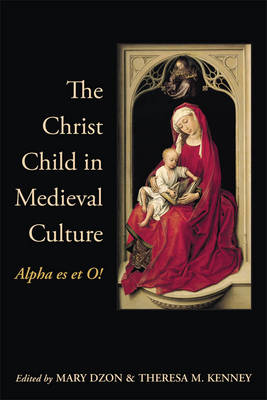
Stock image for illustration purposes only - book cover, edition or condition may vary.
The Christ Child in Medieval Culture: Alpha es et O!
Mary Dzon
€ 55.35
FREE Delivery in Ireland
Description for The Christ Child in Medieval Culture: Alpha es et O!
Paperback. The Christ Child in Medieval Culture is the first interdisciplinary investigation of how representations of the Christ Child were conceptualized and employed in this period. Num Pages: 372 pages, illustrations. BIC Classification: ACK; HBG; HBLC; HRAX. Category: (P) Professional & Vocational; (U) Tertiary Education (US: College). Dimension: 156 x 230 x 25. Weight in Grams: 584.
The cult of the Christ Child flourished in late medieval Europe across lay and religious, as well as geographic and cultural boundaries. Depictions of Christ's boyhood are found throughout popular culture, visual art, and literature. The Christ Child in Medieval Culture is the first interdisciplinary investigation of how representations of the Christ Child were conceptualized and employed in this period. The contributors to this unique volume analyse depictions of the Christ Child through a variety of frameworks, including the interplay of mortality and divinity, the medieval conceit of a suffering Christ Child, and the interrelationships between Christ and other figures, including saints and ordinary children. The Christ Child in Medieval Culture synthesizes various approaches to interpreting the cultural meaning of medieval religious imagery and illuminates the significance of its most central figure.
Product Details
Publisher
University of Toronto Press
Format
Paperback
Publication date
2015
Condition
New
Number of Pages
372
Place of Publication
Toronto, Canada
ISBN
9781442628908
SKU
V9781442628908
Shipping Time
Usually ships in 7 to 11 working days
Ref
99-1
About Mary Dzon
Mary Dzon is an associate professor in the Department of English at the University of Tennessee. Theresa Kenney is an associate professor in the Department of English at the University of Dallas.
Reviews for The Christ Child in Medieval Culture: Alpha es et O!
'The book is highly relevant for those interested in the Middle Ages, the history of Christianity, as well as religion and the arts; it can be an interesting point of departure for future studies on the construction of childhood in the West.'
Daniel S enz Journal of Religion and Culture 'Meticulously documented and edited, this book provides an impressively rich display of the intersections of medieval theology with the visual arts, literary expression, and popular devotion... We will certainly keep this source-book to explore further the ever-endearing and engaging figure of God as baby and little boy.'
Laurie Postlewate The Catholic Historical Review vol 101:03:2015 'The abiding impression of this collection - and every essay repays reading and re-reading - is of the extraordinary richness and poetry of medieval devotions and its remarkable freedom from sentimental fripperies.'
Henrietta Leyser Journal of Ecclesiastical History 'A lively collection of essays.'
Elisabeth Dutton Speculum 'A fascinating volume that makes highly entertaining reading, and should be of widespread scholarly interest.'
Judith Oliver The Medieval Review
Daniel S enz Journal of Religion and Culture 'Meticulously documented and edited, this book provides an impressively rich display of the intersections of medieval theology with the visual arts, literary expression, and popular devotion... We will certainly keep this source-book to explore further the ever-endearing and engaging figure of God as baby and little boy.'
Laurie Postlewate The Catholic Historical Review vol 101:03:2015 'The abiding impression of this collection - and every essay repays reading and re-reading - is of the extraordinary richness and poetry of medieval devotions and its remarkable freedom from sentimental fripperies.'
Henrietta Leyser Journal of Ecclesiastical History 'A lively collection of essays.'
Elisabeth Dutton Speculum 'A fascinating volume that makes highly entertaining reading, and should be of widespread scholarly interest.'
Judith Oliver The Medieval Review
